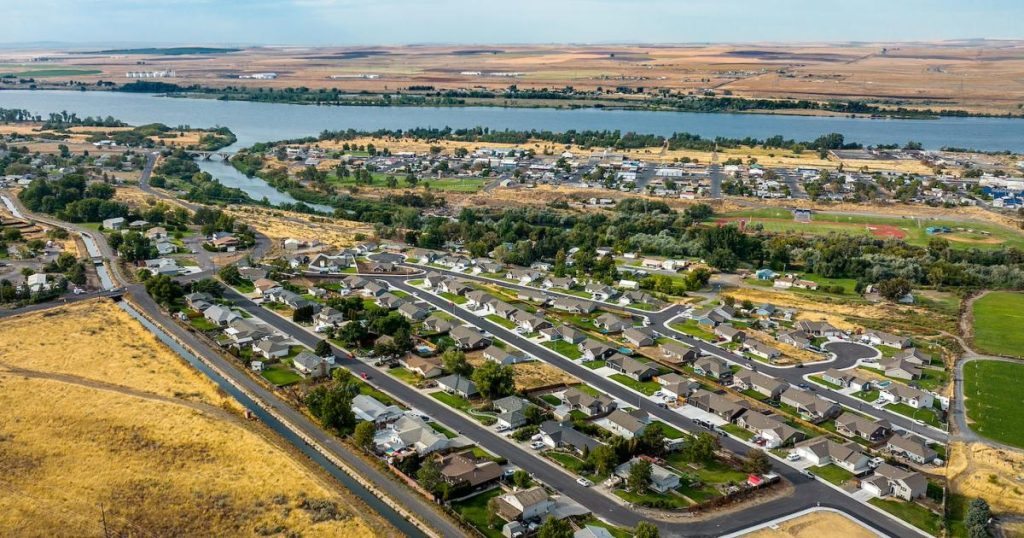Behind Amazon’s plan to restore 4 billion liters of water
4 min read
Amazon Web Services’ latest water replenishment initiatives will return an estimated 1.5 billion liters of freshwater to basins in five countries annually, the company said last week.
According to Will Hewes, the company’s water sustainability lead, AWS will invest in new agricultural, irrigation and leak detection projects to improve quality, volume and access to watersheds in Australia, India, Indonesia, Spain and the U.S.
The cloud service provider’s goal is to become “water positive” by 2030, to offset the water consumed by its data center operations.
Amazon hasn’t said how many liters of replenished water it will need to meet that goal, although it has said it consumes 0.19 liters of water for every kilowatt-hour of energy it uses. By comparison, the average data center uses about 1.8 liters of water per kilowatt-hour, predominantly to keep the servers, networking gear and other technology cool enough to run efficiently without overheating. Hewes said the volume of water withdrawn changes every year depending on business needs.
The company eventually plans to disclose progress toward the 2030 goal on a percentage basis, he said. Like other companies with water restoration goals, Hewes uses the Volumetric Water Benefit Accounting method developed by the World Resources Institute and several other partners to calculate its progress.
How Amazon justifies replenishment projects
Amazon is among a vanguard of companies, including Microsoft and Procter & Gamble, that have committed to water restoration amid deepening freshwater shortages.
With the addition of its latest efforts, Amazon has invested in 13 projects delivering 3.9 billion liters annually in seven countries, or the equivalent of 1,560 Olympic pools. The latest ones, most located near Amazon data center operations, include:
- A partnership with Stroud Water Research Center to improve water filtration and groundwater recharging on farms in northern Virginia. The project will reduce polluted runoff into the Chesapeake Bay.
- A revegetation initiative to help recharge groundwater in the basin that serves Sydney, Australia.
- The rehabilitation and creation of water storage ponds in villages near Hyderabad, India.
- The installation of wells, water treatment and storage systems to support nearly 6,000 people in five villages near West Java, Indonesia.
- Leak detection and repairs in Villanueva de Gallego, Spain, using acoustic sensors.
- A runoff diversion system along Spain’s longest river, the Ebro, and ecosystem restoration on its banks to absorb contaminated runoff.
“These projects are a great snapshot of where we’re at, and the exciting work we’re doing,” Hewes said.
Amazon’s water pricing benchmarks
Projects must meet Amazon’s internal price benchmarks before they get a green light, Hewes said. In some cases, the company might be willing to pay more for infrastructure if it creates overall water savings, he said.
For example, Amazon already uses recycled water to cool data centers in 20 locations. It collaborates with the local municipalities and utilities on infrastructure, and in some cases that means it takes more time — and more money — to complete a project.
The impact for local communities
Financial metrics aren’t the sole consideration, though.
In India, Amazon will restore 86 million liters of water annually in rural communities near Hyderabad, where new ponds will benefit farms and recharge the local aquifer. In Indonesia, the focus is on creating a reliable and safe water supply to villages that currently lack access. The projects will deliver about 200 million liters of clean water.
“Proximity to our operations is a big factor, although a project could be really expensive in an urban area,” Hewes said.
Restoring koala habitats
Amazon’s Australian project is a nature restoration in a region damaged by bushfires in 2019 and 2020. Replanting native vegetation, rather than letting invasive weeds suck up more moisture, will help recharge 32 million liters of groundwater annually. It will also restore the habitats of 15 endangered species including the koala, Australian Bittern and the Bauers Midge Orchid.
“Co-benefits of this nature will help a project rank higher,” Hewes said. “There are definitely a lot of formal and informal factors.”
33 million liters of leaked water
In Villanueva de Gallego, Spain, the focus is on detecting leaks and repairing them. Spain is one of the most water-stressed industrialized countries in the world. The project uses sensors from Fido Tech on 28 miles of water pipes, and has already helped reduce water loss by 33 million liters per year.
Amazon is evaluating other regions in which the Fido technology might be beneficial, Hewes said, especially places where water pipes are aging. It is also sharing data with other companies doing similar water conservation work.
“The best version of collective action is to go do some great work, and then go back and share it with others who can help scale it up,” he said.




